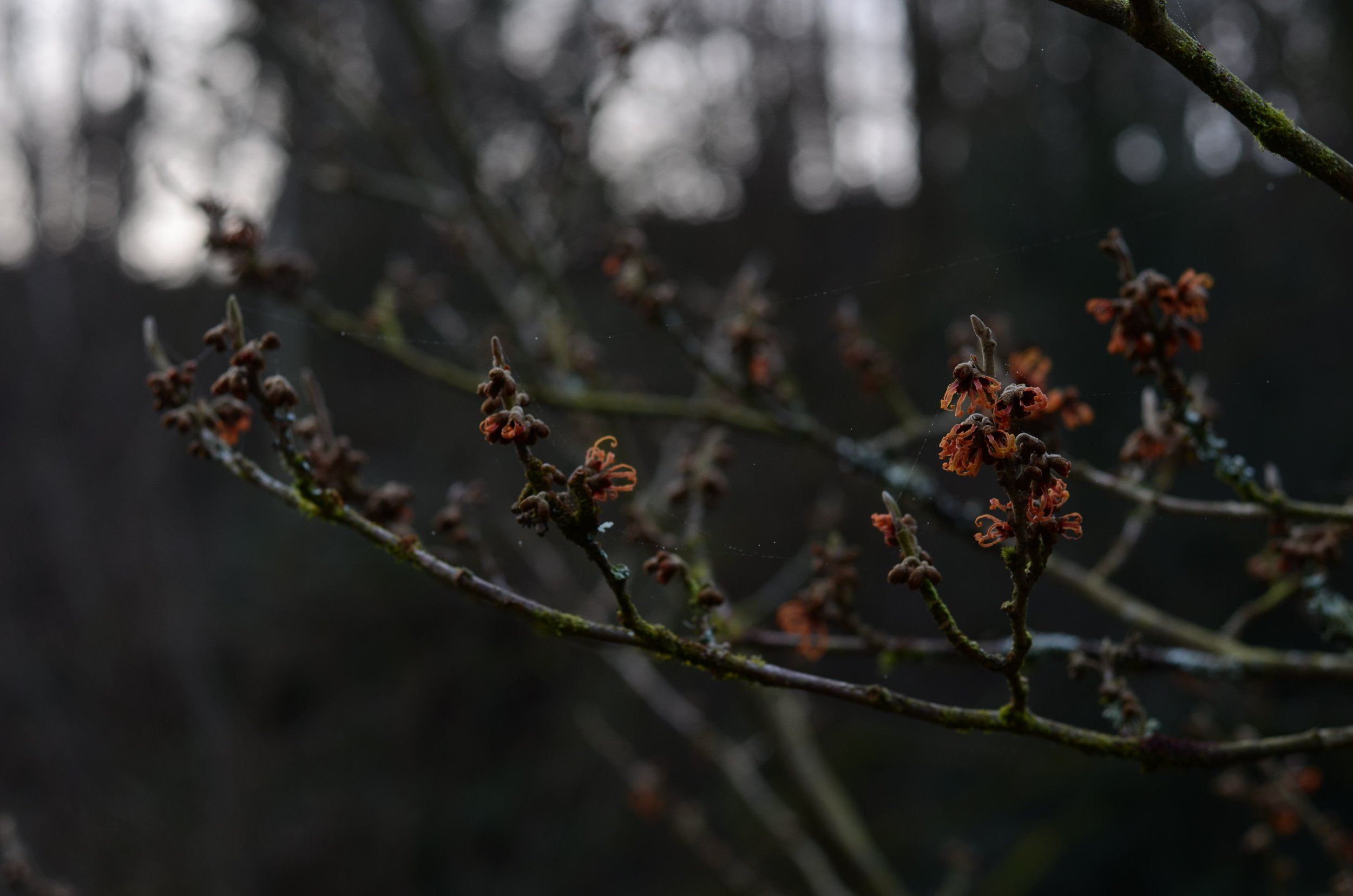a winter jewel

Now stripped of its golden hues, the woodland reveals the interlaced branches that form the backdrop to the garden, their appearance more crooked and sombre as the muted earthy tones reveal a depth of beauty that is only found as the landscape starts to retreat and disappear.
Alder overhanging a section of the brook.
The winter solstice marks the opening of the first flowers on the Hamamelis within the garden, an uplifting sight in the darker months of bewitched fiery tassels strung along bare branches from late December through to February. When it comes to choosing a Hamamelis we favour the intermedia hybrids. Though their scent less obvious than the straight H. Mollis, they provide a better variation of colours, such as Diane, Arnold Promise and Jelena. Hamamelis are happiest in open woodland where the H. Virginiana (common Witch Hazel) is found native to eastern North America. Hopefully one day we can experience them first hand.
The H. Jelena in the garden here is positioned in an open sunny location with room for its limbs to reach out wide, the soil free draining and moist with a PH of neutral to acidic which is favourable but not required. Come October, the sun retreats behind the trees unseen until late February. We assumed that the Hamamelis would require the winter sun to flower productively but we have been pleasantly surprised that although starved of the winter warmth it consistently produces a vivid display.
The Hamamelis in its original position, before being moved.
Last winter we moved the Hamamelis from its original position which sat in an open lawn space away from internal views. When developing the design it became apparent that it would inhibit the line where the pleached trees would adjoin the old part of the house, a point that felt right and would provide an important layer as you travelled alongside the garden’s facade. It was a difficult decision to actively move a tree that looked unperturbed in its position, but it sat in a hollow and its location next to the pathway made it feel cramped by its maturing vase shaped canopy. This, along with the prospect of appreciating its display from within the house made for an easier decision, so we set out to move it, perhaps only five metres in total. It is always an interesting challenge, whether to design around existing elements or to move them to benefit the overall vision of the garden, a dilemma we come across often within our private work, but we always revert back to the ‘feeling’ and how it affects the garden’s future.
We had not personally transplanted an established tree before, and of course moving anything of size can come with its risks but we were happy to take time to see it repositioned with space and in view. At the end of February we finalised the levels throughout the Approach, so we set out to begin the process of moving it. Watching the buds unfold in spring was both a pleasure and a relief.
the process
winter 2021
spring 2021
summer 2021, in its new position,









